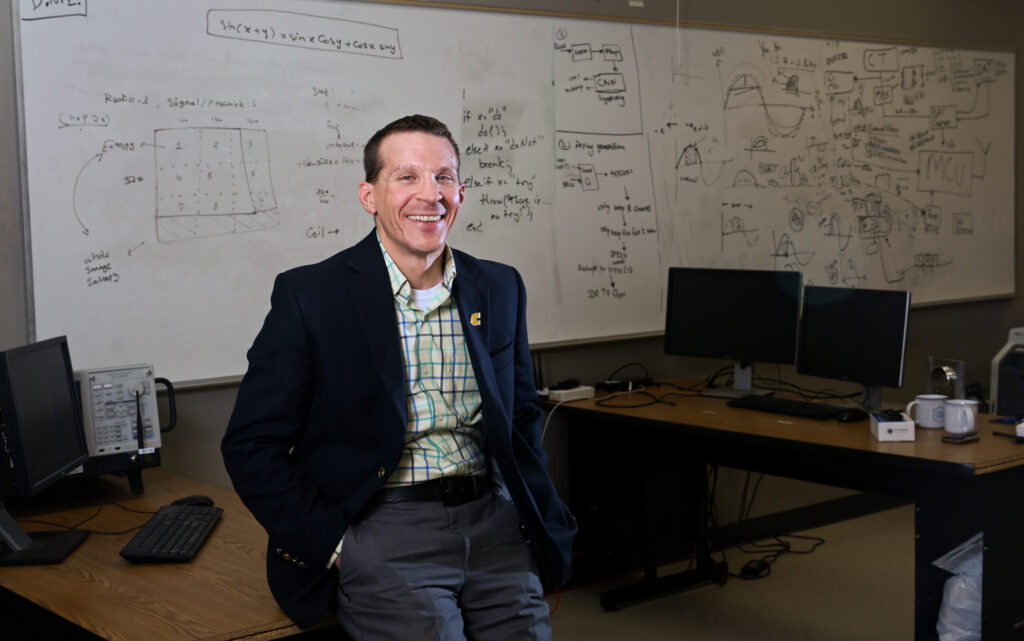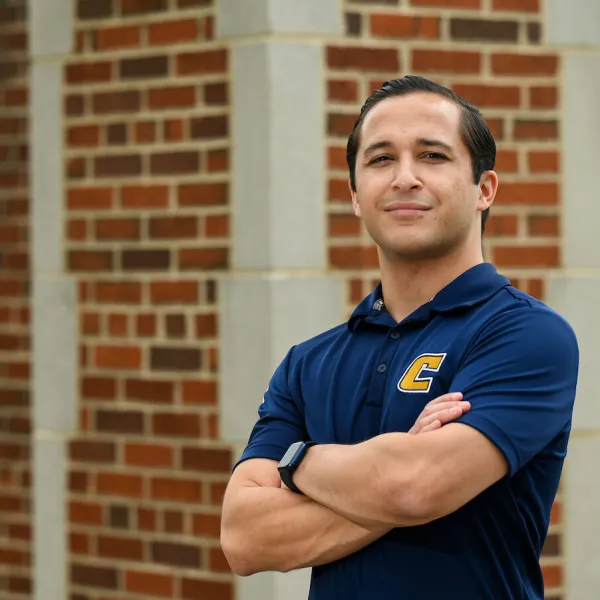
During a routine research meeting between University of Tennessee at Chattanooga (UTC) Guerry and UC Foundation Associate Professor Dr. Don Reising and his most recent Ph.D. student, Dr. Joshua Tyler, an idea for an audio compression algorithm that significantly improves sound quality without increasing data transmission requirements was developed.
AWR—Music and More
With a background in signal processing and a passion for music and audio engineering, Reising and Tyler transformed their idea into Advanced Waveform Resampling (AWR) technology.
AWR is lean and efficient, avoiding the heavy reliance on machine learning or AI which demands powerful hardware and significant computational overhead. As a result, AWR is viable both as a Software as a Service (SaaS) platform and for physical integration into Bluetooth speakers, receivers, headphones, and even smaller embedded systems like earbuds or hearing aids.
With an initial focus on music, AWR is designed to benefit both artists and music enthusiasts, who have traditionally had to choose between high-resolution, wired studio quality or a more convenient, lower-resolution wireless connection. By preserving the full, rich sound typically only realized in studio-quality audio and making it available over existing Bluetooth standards, AWR offers the best of both worlds.
“We developed AWR to operate within the constraints of the Bluetooth standard rather than replace it, ensuring compatibility with any wireless device. Audio production involves layering multiple tracks with intentional nuance to make a song sound just right,” said Tyler. “Every note, intonation, and timing detail must be perfect. AWR meets that demand by preserving the full sonic and tonal quality of the studio version, allowing artists to maintain the integrity of their work—without requiring any changes from the listener.”
As development progressed, Reising and Tyler discovered that AWR’s applications extend well beyond music. The technology can improve sound clarity in existing audio recordings and could even be used in real-time applications. In demo tests, AWR dramatically improved clarity in everything from archival news footage to studio recordings.
Looking ahead, Reising and Tyler hope to embed AWR in physical devices such as hearing aids or wireless earbuds. “My father worked in construction for 30–40 years,” said Reising. “He wore hearing aids, but they amplified everything—even the noise. This technology could help people like him by isolating voices and improving clarity, not just volume.”

From Campus to Commercialization
AWR is still taking shape, with development underway on an easy-to-use, web-based SaaS platform that will allow users of all skill levels—including audio engineers, artists, music enthusiasts, podcasters, streamers, and historians—to benefit from the technology.
Using the AWR SaaS platform will be simple: upload your audio file, let AWR work its magic, and then download the enhanced result. “Initial interest has been strong, especially among those in the audio production and accessibility spaces,” said Reising.
UTRF and the broader UT ecosystem have played a key role in helping Reising and Tyler mature their technology and better understand their customer base. The pair completed the regional NSF I-Corps program, which focused on customer discovery and market research, and they’re considering participating again as they refine AWR and explore new markets.
UTRF also awarded Reising and Tyler a Maturation Grant to help bring their research closer to market readiness. That funding supported the development of the SaaS platform and helped position the technology for broader applications.

“UTRF gave us the momentum we needed,” says Reising. “Without that support, we’d still be working out of notebooks and prototypes.”
Reising also credits UTC Commercialization Counselor Jennifer Skjellum and Tom Lyons, UTC’s Chair of Entrepreneurship, for fostering a campus environment that encourages innovation and exploration of commercial potential. Their support included regular meetings, networking opportunities, and seed funding for early-stage ideas.
“Jennifer started bringing attention to what the invention process actually looked like,” said Reising. “She organized regular meetings that not only helped build collaboration among researchers but also opened our eyes to the commercialization side of research.”
Reising and Tyler’s progress with AWR highlights the vital role UTRF plays in helping innovators turn research into real-world solutions. From early guidance in IP strategy and commercialization support to targeted funding through the Maturation Grant, UTRF has been instrumental in moving AWR from concept to a product with broad potential.
“It’s been exciting to help guide AWR from an early-stage idea to a technology with real commercial potential,” said UTRF Technology Manager Gregory Sechrist. “Our partnership with Don, Joshua, and UTC reflects the best of what UTRF aims to do—support faculty innovation and help translate it into meaningful impact.”
As development continues, UTRF remains a key partner—providing resources, connections, and encouragement that help researchers like Reising and Tyler navigate the path from lab to market.